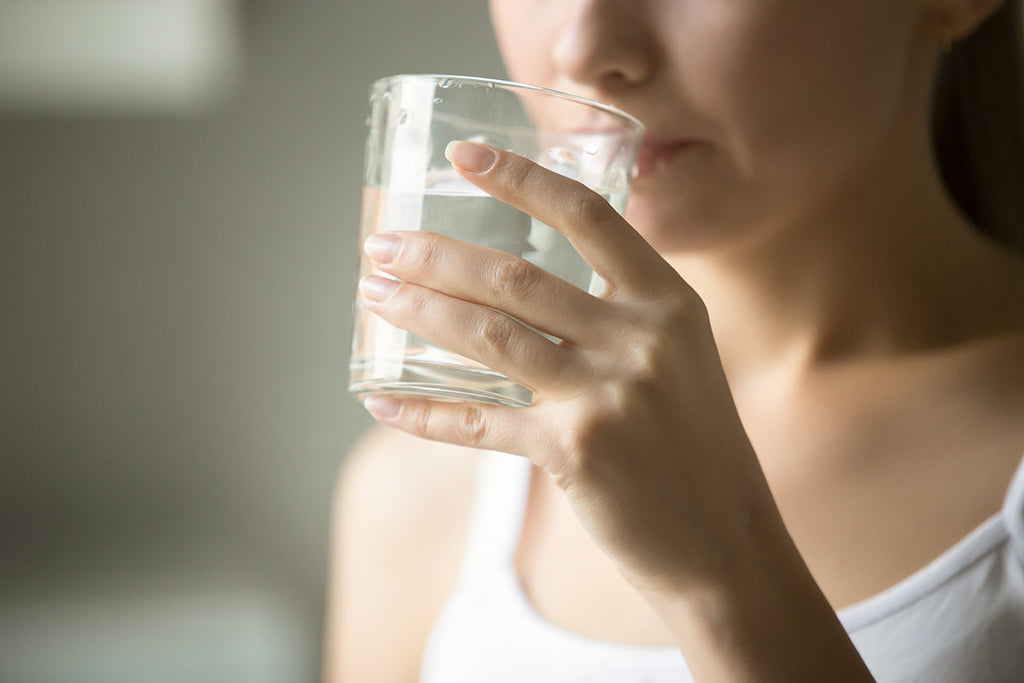Do You Need a Water Filter?

Do You Know What’s in Your Drinking Water?
If You’re Not Sure, You're Not Alone.
A recent survey from NSF International found that over half of all U.S. consumers are either concerned about – or do not know – what is in their drinking water. And of those who are concerned, nearly half “do not take steps to filter or treat their home’s drinking water.”
Contamination of your water supply can result from many sources, including infrastructure, human activity, or even natural surroundings. This means that everything from the rainstorm last week to the pipes delivering your water impact the quality of the water you drink every day. Even the chemicals used to clean your water make a difference in terms of both safety and taste.

With so many people worrying about the potential contaminants in their water, you would think that the ways to obtain water quality information and protect our families would be common knowledge, or at least easy to access. But the fact is that most of us don’t know where to start when it comes to figuring out our water filtration needs. At WaterChef, we're here to help you.
Follow along with this step-by-step guide to find out whether a water filter should be used for your water.
STEP 1: Find Your CCR (Consumer Confidence Report)
If your water is connected to a municipality in the US, they are required to provide you with a Consumer Confidence Report each year. This water quality report tells you where your water is sourced from, what contaminants have been found, and how they rank against current EPA Standards. Reading this report will give you a baseline as to what is happening with the water supply in your area and is the first step in figuring out your water filtration needs.
If you have additional concerns about contaminants specific to your home or contaminants imparted during transport to your home, you should go one step further and have your water tested. Many local water authorities provide contact information of local independent labs that will test your water for a fee. Alternatively, you can also purchase a DIY test kit from most local home improvement stores or online. This can provide you with more insight into your water quality.
If you choose the DIY route, make sure to get the right test for your concerns. A test for hard water doesn’t necessarily tell you if there are worrisome contaminants coming out of your faucet. A TDS Meter is also a poor measure of water quality since it only tests for total dissolved solids (TDS). This is usually attributed to beneficial minerals (calcium, potassium, and magnesium) that are known to support good health, so the TDS levels aren't a good indicator of actual water quality. It is important to find a testing kit that measures harmful contaminants of true concern.
“Most people purchase the wrong equipment because they skip this very important step, and then they’ve wasted money and resources on a system that isn’t making their water any safer.”
James P. McMahon, Ecologist
STEP 2: Find the Right Filter for Your Needs
Once you know what’s in your water, the next step is figuring out which filter is right for you. Unfortunately, not all water filters are created equally. Do your research and make sure that your choice addresses your actual filtration needs. Basic models often focus primarily on removing chlorine only. If you’re worried about contaminants such as lead, mercury, or pharmaceuticals, look for a water filter that’s more robust than one that only removes chlorine.
You'll also want to determine what type of installation is best for your living situation. If you are a homeowner, consider installing a whole house system in conjunction with an under-sink filter system. A whole house system generally targets common contaminants, such as chlorine, throughout your home. A good point-of-use system will target a broader range of contaminants in your drinking water. If you are renting, a powerful countertop water filter may be your ideal solution. It offers excellent point-of-use results while allowing you to take the system with you when you move.

Regardless of the type you chose, make sure that your filter is certified by a trusted third-party laboratory: WQA, IAPMO, or NSF. Certification from any of these sources is highly valued and trusted among consumers, manufacturers, retailers, and regulatory agencies.
Sadly, the water filtration industry is riddled with dishonest manufacturers who make false and/or misleading claims. While a water filter system may be promising according to the product packaging or online description, it's important to understand that these claims may be unfounded.
Choosing a system that is independently validated by a trusted lab ensures that it's gone through rigorous testing protocols. This will also confirm that the manufacturer's contaminant reduction claims are accurate. Don’t risk your family’s health by assuming a system's performance claims are true. Make sure whichever water filtration system you decide to use is independently tested and certified for NSF/ANSI Standards.
STEP 3: Don't Forget Your Shower
Now that you’ve found your filter of choice for drinking water, don’t forget about your shower. Chlorine absorption is often an overlooked culprit that strips away your body's natural oils and proteins. This can lead to a variety of frustrations, including dry skin, dull hair, and unsightly rashes. Installing a good-quality shower filter system that is certified for NSF/ANSI Standard 177 (Chlorine) can help alleviate these issues.
Follow these three steps to make sure your home's water is safe for you and your family.

















